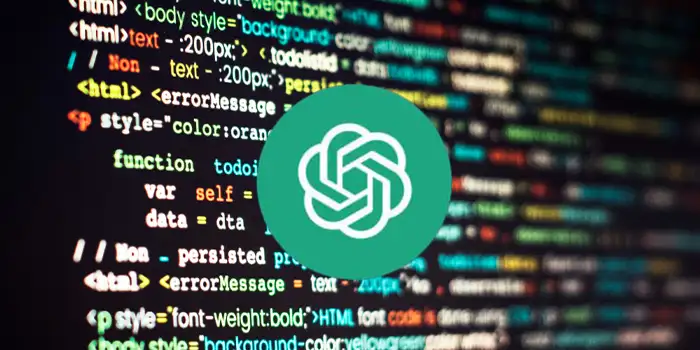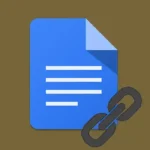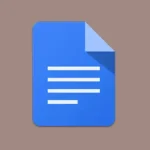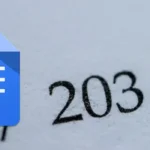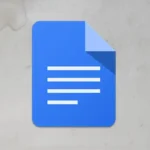Ever wondered how a computer program could produce responses that were so intelligent and human-like? Well, ChatGPT is truly remarkable in its ability.
I know that behind the scenes, a complex network of algorithms and cutting-edge technologies work in tandem to bring ChatGPT to life.
In this article, we are going to discuss how ChatGPT works. The inner workings of ChatGPT are complex but I’m going to present the information in a simplified manner so that everyone can understand.
I’m going to start right from the moment you type your question or prompt, then we’ll follow it through the process that happens inside ChatGPT.
Let’s get to it.
1. The User Inputs a Question or Prompt
The very first step is when a user, just like you and me, types in a question or prompt. This is the pivotal moment that sets the stage for the remarkable capabilities of ChatGPT that come into play.
To illustrate the significance of this step, let’s say you’re a curious individual seeking information about a popular movie. You entered your query to ChatGPT like, “Can you tell me about the plot of the latest blockbuster?”
When we enter our questions or prompts to ChatGPT, it begins its magical journey of understanding. It will carefully examine each word and tries to make sense of what you’re asking.
Once we hit the enter button, our questions or prompts travel through the digital realm, zooming straight into ChatGPT’s virtual brain. This is like a speedy rocket carrying our curiosity to a whole new world of knowledge and wonder! Inside ChatGPT, amazing things start happening.
2. ChatGPT Processes the Input through Tokenization and Numerical Representation
Let’s not dive into the second step! Once the user has entered their question or prompt, it’s time for ChatGPT to work its magic and process that input. Exciting right?
During this step, ChatGPT uses a technique called tokenization. It’s like breaking down your question into small, meaningful pieces called tokens. Each token represents a word, a part of a word, or even a punctuation mark. Think of this as slicing up a pizza into bite-sized slices!
Once ChatGPT has tokenized your question, it’s time for some numerical representation. That means assigning a special number to each token. Now, it’s giving a secret code to every slice of pizza so ChatGPT can work with it more easily.
Why do we do this? Well, you see, computers understand numbers better than words. So, by turning your questions into numbers, ChatGPT can crunch and process that information faster than you can “supercomputing wizardry”!
OpenAI trained the model using mountains of text from different sources. They fed ChatGPT with millions and millions of sentences until it soak up that knowledge like a giant sponge!
Now, when you ask ChatGPT a question, it uses its numerical representation magic to compare your input with patterns it learned during training.
Now that we’ve unlocked the secrets of this step, get ready for the next one where ChatGPT’s neural network takes that stage and works its neural magic. The journey is just getting started so stay tuned.
3. ChatGPT Utilizes its Neural Network Architecture for Inference
Once ChatGPT has processed your input through tokenization and numerical representation, it’s time for neural network architecture to shine. I want you to picture this process as a web of interconnected brain cells. It’s like the ones inside our heads but on a super-duper computer scale.
OpenAI has trained this neural network using massive amounts of data like books, articles, and many more. This training process was like teaching a computer to think and understand just like a human. (well, almost!)
Now, when we ask a question to ChatGPT, its neural network goes to work by using all that training to make sense of your input.
The neural network will now look at the numerical representation of your question and starts making connections. It searches for patterns, similarities, and context clues.
The coolest part about this is ChatGPT doesn’t rely on one single neural network. It consists of many layers of interconnected networks, each with its special role.
These networks pass information to one another, refining and enhancing the understanding of your question. It’s like a game of telephone but, instead of whispers getting distorted, the networks collaborate to improve the accuracy and relevance of the response.
4. ChatGPT Gains Contextual Understanding by Leveraging its Pre-trained Knowledge
When ChatGPT has utilized its neural network architecture, it’s time for something truly special, which is gaining contextual understanding. ChatGPT will now understand your question more deeply and grasp its true meaning.
So, when a user will ask a question, ChatGPT will tap into its pre-trained knowledge to provide a more comprehensive response.
The magical part about this is that ChatGPT doesn’t rely on the words that you have typed in. IT will look at the context surrounding your question. Then it will consider the words before and after, the tone of the conversation, and even the world knowledge it has required.
If you’re going to ask ChatGPT about, “How to cook Fried Chicken?” It’s not just about ChatGPT searching for the words “cook, “fried”, and “chicken”. It goes beyond that! ChatGPT has a remarkable ability to understand the context and meaning behind your question even if you don’t provide all the details.
In this step, ChatGPT is just tapping into a vast library of information to make sense of your question and provide a more nuanced response.
5. The Generated Text Undergoes Output Processing
The fifth step is the generated text undergoes output processing. This is the part where adding the final touches to make the response shine like a polished gem.
During the output processing, OpenAI employs smart algorithms and techniques to refine the generated text. This is like having a team of editors who carefully review and enhance the response.
These techniques help improve the quality of the output in multiple ways. They ensure that the response is grammatically correct and it makes sense within the given context.
It also aligns with OpenAI’s guidelines and policies. They want to confirm that the response is appropriate for the conversation and correct.
For example, you ask ChatGPT, “How do plants grow?” and it generated a response like, “Plants grow by dancing in the moonlight” While this response is creative and amusing, output processing helps ensure that ChatGPT provides a more accurate and informative answer.
Output processing helps ChatGPT deliver responses that are reliable and aligned with factual knowledge. It guarantees the accuracy of the information presented and aids users in better comprehending the subject at hand.
6. The Response is Delivered to the User
Now that ChatGPT has gone all through the processing magic, it’s ready to share its marvelous response or answer with you.
The response is now delivered to you through a user-friendly interface. OpenAI, the people behind ChatGPT, have designed intuitive ways for users to interact with the system, making it accessible and enjoyable for everyone.
Let’s say you ask, “What is Galaxy?” In a matter of moments, ChatGPT springs into action, processing your question and generating an enlightening response. The AI chatbot presents the answer right there on the screen and it unveils the wonders of the galaxy.
The delivery of the response was smooth and seamless, thanks to the incredible engineering efforts of OpenAI. They have really built robust systems that ensure the generated text reaches you clearly and understandably.
7. The Process Repeats as the User Provides New Input or Prompts
When the response is delivered to the user, we can consider it as the final step in the process of how ChatGPT works. However, this doesn’t mark the end of the user’s interaction with the system. In fact, most users want to engage more for further exploration.
Once the user receives the response from ChatGPT, the journey doesn’t end there. You have the power to continue the conversation and explore new horizons. This AI language model is ready to chat with you no matter how many questions or prompts you have.
If you have asked ChatGPT about your favorite animal like, “Tell me about dolphins” In no time, ChatGPT will provide a quick answer. But your curiosity doesn’t stop there.
Inspired by the knowledge you gained, you provide new input by asking, “What do dolphins eat?” ChatGPT will jump back into action, process your question, and generate another informative response.
This process of input and response continues as you engage with ChatGPT. Each time you provide a new question or prompt, the system will analyze, understands, and generate answers.
OpenAI has designed this iterative conversation approach to ensure that users can explore a wide range of topics and dive deeper into their areas of interest.
Final Thoughts
We have uncovered the magic behind how ChatGPT works. It’s truly mind-boggling to witness the incredible capabilities of this AI language model.
One of the most remarkable aspects of ChatGPT is its lightning-fast speed in providing responses. With just a few taps of the keyboard, it processes our questions or prompts in a blink of an eye.
The complexity of ChatGPT’s system is a testament to the incredible work of the talented engineers, scientists, and researchers at OpenAI.
The level of sophistication achieved by ChatGPT is nothing short of extraordinary. I believe that this AI language model will continue to improve in the future.

